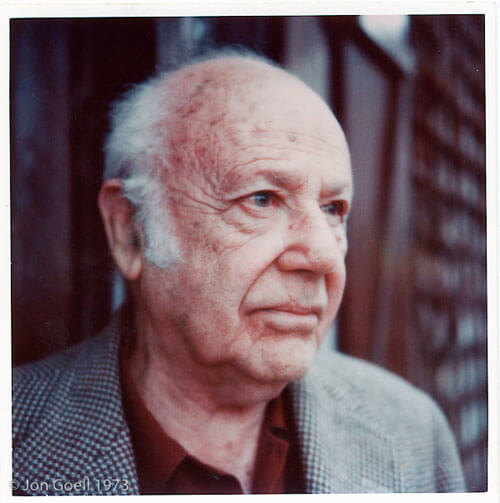Paul Strand was born in New York City. As a teenager, he was a student of renowned documentary photographer
Lewis Hine at the
Ethical Culture Fieldston School. A visit to
Gallery 291 (owned by
Alfred Stieglitz) proved to be a strong influence on Strand, who began to take photographs of his own. He experimented with abstraction but also used his camera as a means to promote social reform.
Alfred Stieglitz praised these early efforts and featured Strand's work in his gallery and in his magazine Camera Work.
In the early 1920s, Strand began to work in motion pictures as well as still photography. In June 1949, Strand left the United States to present a film in Czechoslovakia, an event which marked the beginning of his self-imposed exile overseas due to the prevailing climate of McCarthyism in America. He settled in Orgeval, France and in the ensuing years photographed extensively, and also produced six book
"portraits" of places:
Time in New England (1950),
La France de Profil (1952),
Un Paese (1955),
Tir a'Mhurain / Outer Hebrides (1962),
Living Egypt (1969) and
Ghana: An African Portrait (1976).
Source: Robert Mann Gallery
Strand married the painter
Rebecca Salsbury on January 21, 1922. He photographed her frequently, sometimes in unusually intimate, closely cropped compositions. After divorcing Salsbury, Strand married
Virginia Stevens in 1935. They divorced in 1949; he then married
Hazel Kingsbury in 1951 and they remained married until his death in 1976.
The timing of Strand's departure to France is coincident with the first libel trial of his friend Alger Hiss, with whom he maintained a correspondence until his death. Although he was never officially a member of the Communist Party, many of Strand's collaborators were either Party members (James Aldridge; Cesare Zavattini) or prominent socialist writers and activists (Basil Davidson). Many of his friends were also Communists or suspected of being so (Member of Parliament D. N. Pritt; film director Joseph Losey; Scottish poet Hugh MacDiarmid; actor Alex McCrindle). Strand was also closely involved with
Frontier Films, one of more than 20 organizations that were identified as
"subversive" and
"un-American" by the US Attorney General. When he was asked by an interviewer why he decided to go to France, Strand began by noting that in America, at the time of his departure,
"McCarthyism was becoming rife and poisoning the minds of an awful lot of people."
During the 1950s, and owing to a printing process that was reportedly only available in that country at the time, Strand insisted that his books be printed in Leipzig, East Germany, even if it meant they were initially banned in the American market on account of their Communist provenance. Following Strand's move to Europe, it was later revealed in de-classified intelligence files, obtained under the Freedom of Information Act and now preserved at the
Center for Creative Photography at the University of Arizona, that he was closely monitored by security services.
Source: Wikipedia

